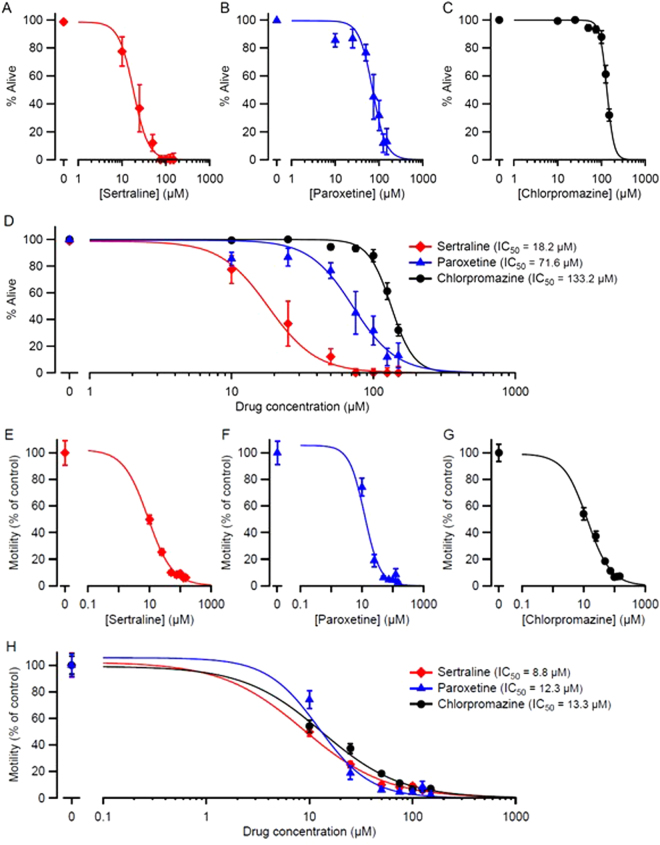Figure 1.
Sertraline, paroxetine, and chlorpromazine impair survival and motility in C. elegans. (A,B,C) Embryos were placed on plates containing the indicated concentrations of drug, and hatched embryos were scored at 48 h for survival (mean ± S.E.M.; N = 6 replicates; 50–100 embryos plated per replicate). In every case, there was a significant effect of the drug on survival (p < 10−10; Likelihood Ratio test). (E,F,G) Day 1 adult worms were exposed to sertraline, paroxetine, or chlorpromazine on plates for 24 h. Worm movements were video recorded and movement speeds calculated using automated tracking analysis software (WormLab). Data are shown as mean ± S.E.M.; N = 3 replicates; > 40 individual worms tracked per concentration. In every case, there was a significant effect of the drug on motility (p < 10−10; Likelihood Ratio test). Smooth curves in (A–H) are best fits to the Hill equation (see Materials and Methods). (D) and (H) show the superimposition of the curves in (A–C) and (E–G), respectively, for comparison. Calculated IC50 values (the drug concentration at which survival or motility were reduced by 50%) are shown. Pairwise comparisons of IC50 values for lethality showed significant differences between all 3 three drugs (p < 10−8; Likelihood Ratio test; D), but there were no significant differences in IC50 for the motility assay between drugs (p > 0.08; H).

